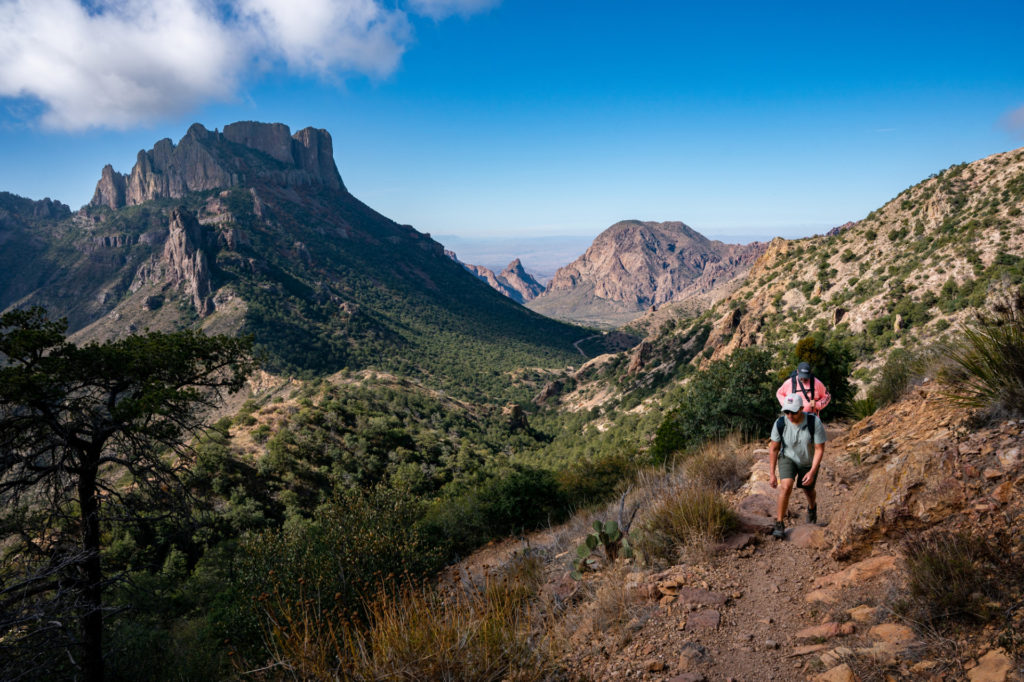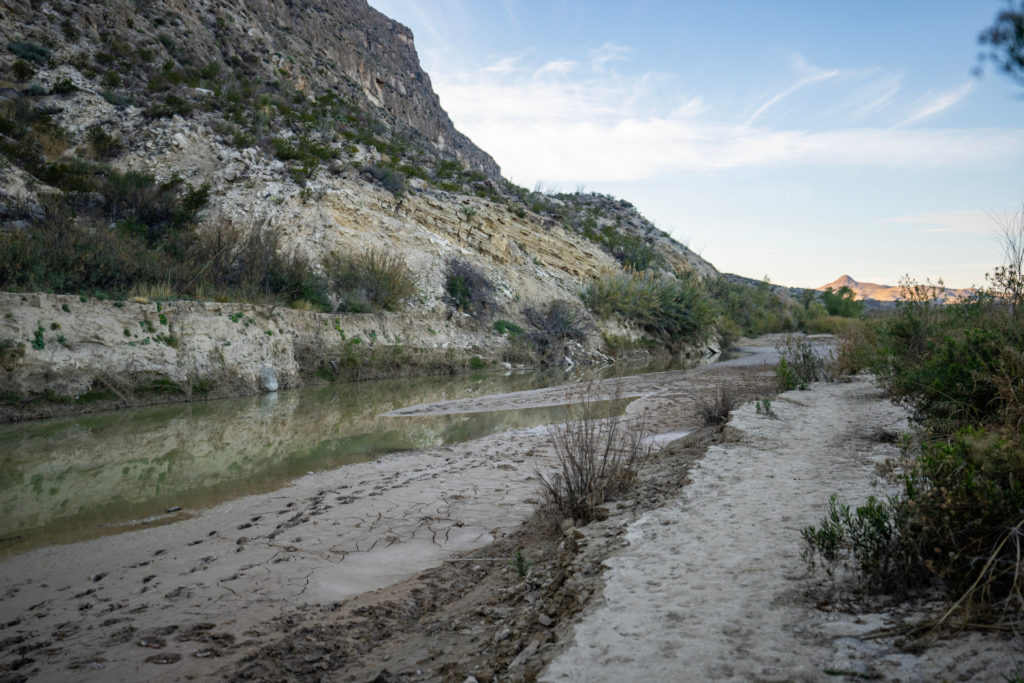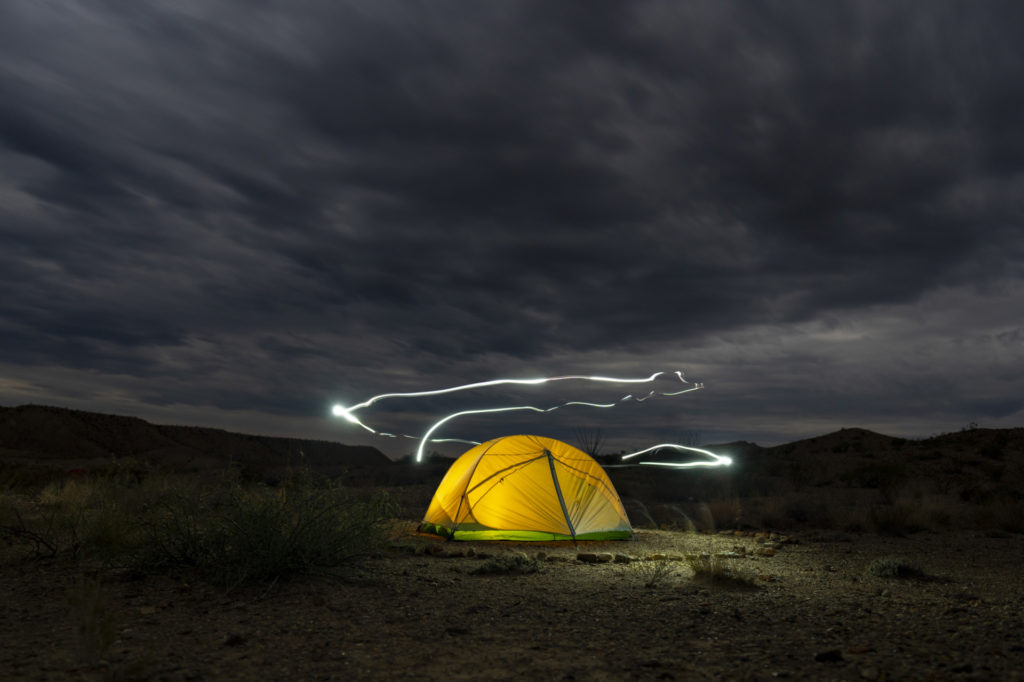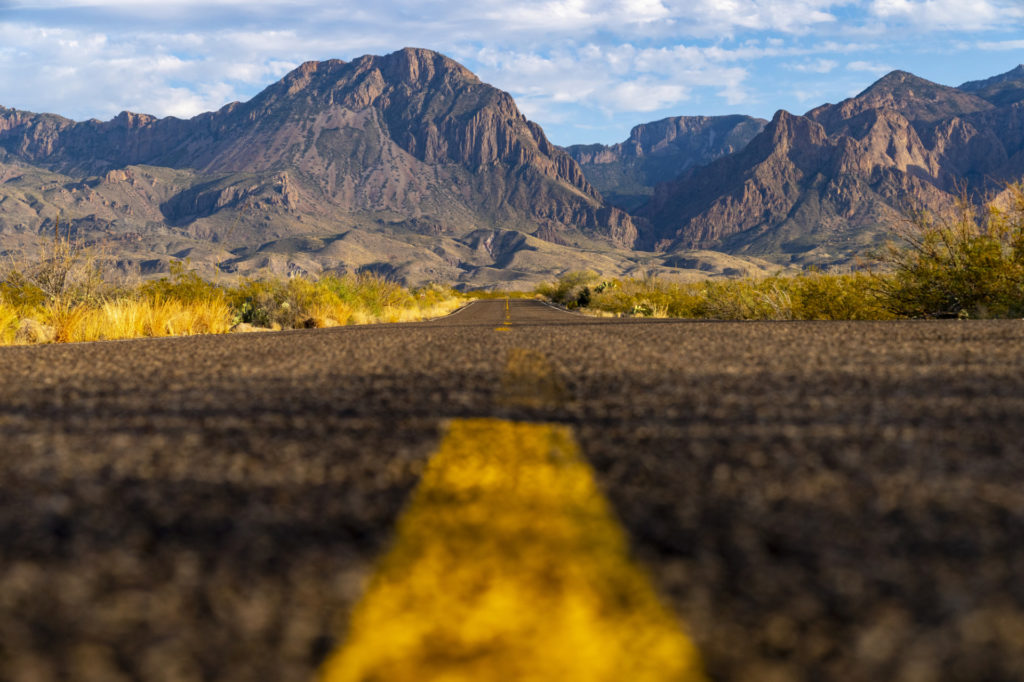New report gives overview of visitors to Big Bend area
Texas A&M College of Agriculture and Life Sciences survey examines travel patterns, experiences, benefits
More than a half million people visited Big Bend National Park and the surrounding area in 2022, making it one of the state’s top tourist destinations.
Now experts from Texas A&M’s College of Agriculture and Life Sciences have done a deep dive into the how, when and why people go to the Big Bend area. The results have been published recently in the “Visit Big Bend” Visitor Survey 2022 prepared for the Brewster County Tourism Council. The survey and subsequent report are a follow-up to visitor research done from 2003-2004 and 2012-2013.

The 48-page report includes input from experts in the college’s Department of Rangeland, Wildlife and Fisheries Management, Department of Recreation, Park and Tourism Sciences and Department of Agricultural Economics.
“The draw of the Big Bend area includes its unique landscape as part of the Chihuahuan Desert ecosystem along with its archeological and historical significance, incredibly clear skies and, this time of year, an impressive array of wildflowers,” said Gerard Kyle, Ph.D., professor and associate department head for academic programs in the Department of Rangeland, Wildlife and Fisheries Management, who served as primary investigator for the report.
Kyle also said the area provides a range of recreational opportunities such as camping, hiking, rafting and birding.
“For those of us with an interest in park and protected area management, Big Bend is unique for Texas,” he said. “Since 2020, it has record visitation that has put pressure on the area’s ability to manage visitor impact. At the same time, this increased visitation has been a boon for the towns in Brewster County as it has had a positive economic impact.”
Offering important visitor information
The report will be vital in determining who visits the Big Bend area, what their needs are and how to best reach them, said Robert Alvarez, executive director of Visit Big Bend.
“The number of visitors to the Big Bend area from Texas, the rest of the U.S. and internationally keeps growing, and it’s important to know where and how to best focus our marketing efforts,” Alvarez said. “The tourism industry has changed and so has the type of visitor to our area, including an increase in the number of millennials and first-time visitors.”
Visit Big Bend’s marketing goal is to reach a wide range of potential visitors with the message that the area offers something for everyone, he said.
“We have everything from more high-end experiences like golfing to experiences for those who just want to find a plot of ground and set up a tent and a sleeping bag,” he said. “This report will help us determine how to best serve our visitors and let them know what we have to offer. It will also help give our visitors a better understanding of the type and variety of our offerings and what they can expect once they arrive.”




About the survey
Two questionnaires were used to gather data — one for on-site interviews and one as a follow-up, which respondents completed online. A total of 852 on-site interviews were conducted and 291 follow-up surveys were completed.
Kyle said the on-site form was used to collect information on travel patterns, activity participation, perceptions about seasonal visitation, and initial economic information. The follow-up survey included more detailed questions about participating in activities in the Big Bend region, visitor spending and perceptions of services. It also included questions related to COVID-19, area law enforcement and demographic characteristics.
Who visits the Big Bend area?
The majority of visitors to the Big Bend area are from throughout Texas, with many coming from the state’s major metropolitan areas.
“However, more than half of those responding to our on-site interviews had not been to the Big Bend area before,” Kyle said. “The survey shows the proportion of first-time visitors to the Big Bend area continues to increase.”
Kelly Kyle, a lecturer in the Department of Recreation, Park and Tourism Sciences and report co-author, said ensuring local providers and communities recognize that most visitors are likely first-time visitors can be critical in developing a long-term relationship.
“There is no doubt that visitors are drawn to this area for its diversity and the variety of recreational opportunities,” she said. “Recreation and tourism service providers can use the information contained in this report to shape decisions about the current and future needs of their visitor clientele.”
The report results suggest returning visitors are likely specialized recreationists, she said, so supporting these visitors in their recreational endeavors could be important as changes occur in the environment and communities.
“Additionally, almost three-quarters of the respondents noted that their travel group was between two and four individuals, so group experiences are also an important aspect of tourism in the Big Bend area,” Kelly Kyle said.
According to survey data, almost two-thirds of visitors in 2022 came from Texas. The most prominent states of origin for out-of-state visitors were Florida, California, New Mexico, New York, Washington, Oklahoma, Tennessee, Virginia, Louisiana and Ohio. Approximately 1.6% of respondents were international visitors, with Australia, France and Mexico being the most represented nations.
Preferred activities, visitor benefits
The report shows day hiking, star gazing, pleasure driving, photography, visiting historical or cultural sites, wildlife watching, plant identification and backpacking rank among the top activities for visitors to Big Bend National Park.
“Visitors to the Big Bend area engaged in a number of activities both on their own and with a guide service, with self-led experiences more prevalent than guided experience,” said Kelly Kyle.
The most prominent activities reported were day hiking with 87.4% participation, star gazing with 67.5% participation and driving for pleasure with 66% participation. Nature observation activities were commonly reported, with the most common being wildlife and bird watching at 44.2% and 32.3% participation, respectively. About half of respondents indicated they engaged in photography and visiting historic and cultural attractions.
“For visitors who engaged in boating, rafting and horseback riding, more than 50% used a guide,” she said.
“Experiencing the beauty of nature” was the highest-rated benefit from travel to the Big Bend area for visitors. Other top-rated benefits were “being in a natural place” and visiting Big Bend National Park.
How often, when and how long do they visit?
The report showed more than 56% of the visitors surveyed had never previously visited the Big Bend area, while over 10% reported they had visited the Big Bend area 10 times or more.
Visitors in the spring and fall were approximately half first-time visitors and half repeat visitors, while the majority of visitors in the summer and winter were first-time visitors.
When asked about their interest in visiting the Big Bend area during another season, respondents overwhelmingly exhibited interest in spring, fall and winter, but showed a lack of interest in returning during the summer.
On average, respondents reported spending approximately four days and three and a half nights in the Big Bend area, 2.78 days of which they planned to spend in Big Bend National Park. More than 96% of the on-site interviewees had spent or were planning to spend at least one night in Big Bend National Park or one or more of the gateway communities in Brewster County.
The economic benefit
Visitors impact local economies and provide business and employment opportunities, according to the report.
“In addition to bringing increased revenues to the region and state, an active tourism industry creates jobs and business opportunities,” said Dan Hanselka, Ph.D., a Texas A&M AgriLife Extension Service program specialist in the Department of Agricultural Economics and report co-author. “Tourism can also play a significant role in a regional economy while allowing visitors the opportunity to enjoy the region’s environmental and natural resources.”
According to the report, visitors to Big Bend National Park spent an average of $369.79 on their entire trip in 2022. On a per-day, per-person basis, visitors spent an average of $76.77 that year.
“Extrapolating expenditure patterns across the region’s 518,254 annual visitors in 2022, spending in Brewster County by all visitors totaled $191.6 million in 2022,” Hanselka said.
Hanselka said the direct economic contribution from Big Bend tourism led to a total county-level economic output of $264.7 million, including its support of approximately 2,580 full- and part-time jobs annually.
“This total contribution includes a $130.9 million contribution to gross regional product and a $81.7 million contribution to labor income across the region,” he said.
Other survey results
Other results from the surveys showed web-based information, including the Visit Big Bend website, was the most-used resource for planning trips to the Big Bend area.
“A growing number of visitors are using information from websites such as YouTube and YouTube reviews and influencers to determine where they stay and what they do in the Big Bend area,” said Gerard Kyle. “The growth in web- and mobile-based information should be a focus of marketing for providers.”
In relation to the impact of COVID-19 on visiting the Big Bend area, the vast majority of visitors reported COVID-19 concerns had no impact at all on their planning. Those who were concerned about the pandemic during their trip planning said they were only slightly impacted.
Respondents said a lack of time was a consistent barrier to engaging in activities. Additionally, while many visitors expressed a desire to participate in river-related activities, low water levels in the Rio Grande River prohibited them from doing so.
Another problem for survey respondents was the lack of food services, including quantity, quality and location of services.
“Improving accommodation quality and food services availability could be important areas to focus on regarding the visitor experience,” said Kelly Kyle. “However, it should be noted that the natural environment and scenic beauty of the Big Bend area is by far the biggest draw reported by visitors. But maintaining this balance with sufficient visitor support services is important to the success of long-term tourism efforts.”


